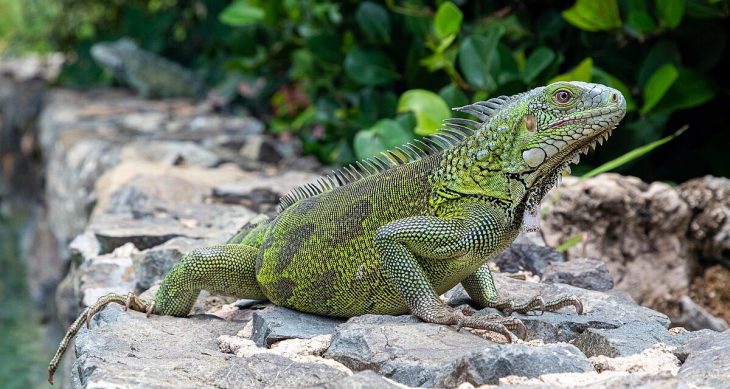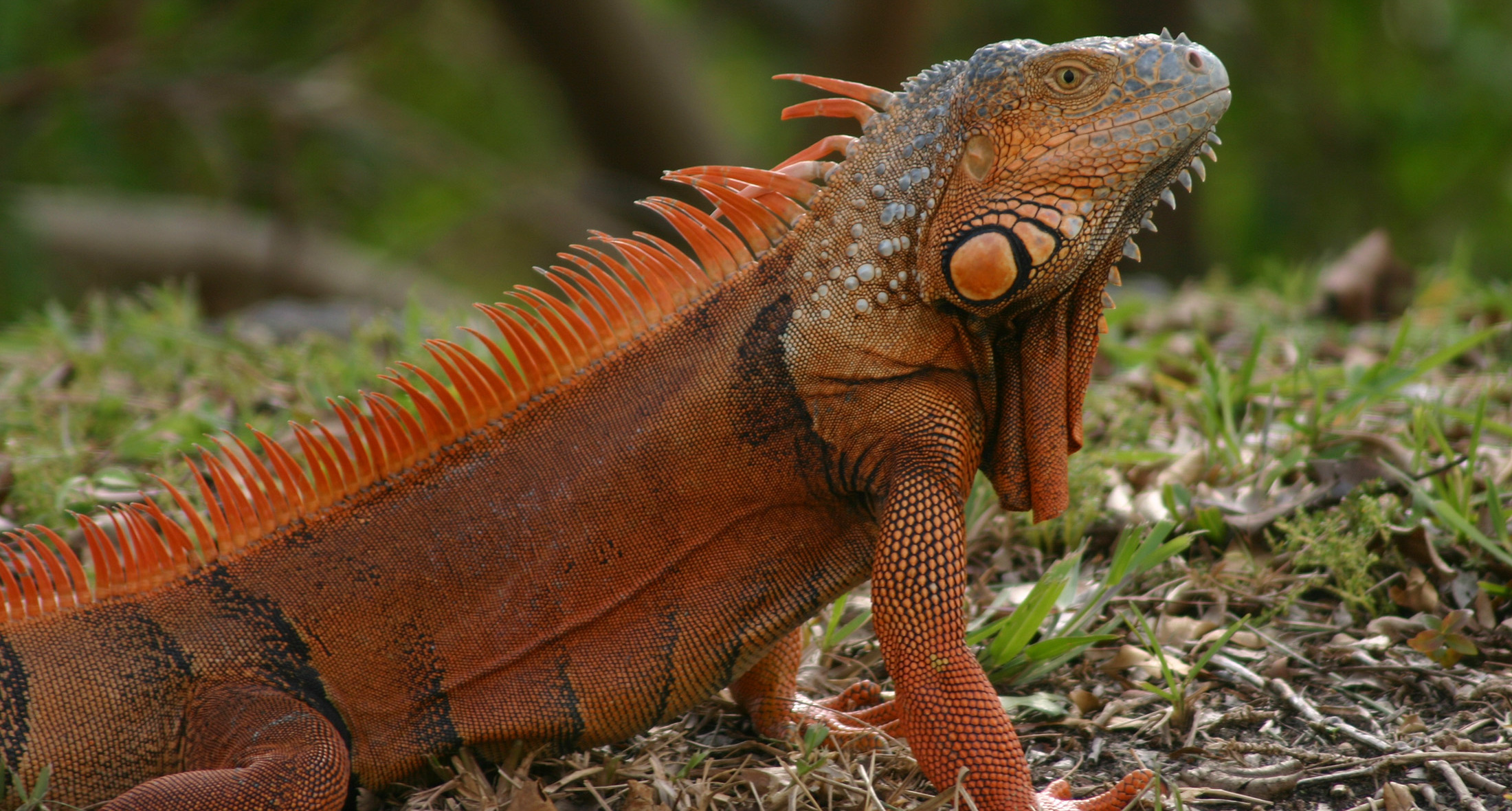
Are you ready to embark on an exciting journey to discover fascinating facts about one of nature’s most incredible creatures? Join us as we dive into the captivating world of iguanas! These magnificent reptiles are known for their vibrant colors, unique physical features, and captivating behaviors. In this article, we will explore 15 intriguing iguana facts that will amaze and educate kids of all ages. So, let’s get started!
What Is an Iguana?
Before we dive into the facts, let’s learn what an iguana actually is. Iguanas are large lizards belonging to the family Iguanidae. They are native to tropical regions such as Central America, South America, and the Caribbean Islands. These cold-blooded reptiles are known for their long, slender bodies, strong legs, and a crest of spines running down their backs.
The Green Iguana
The green iguana, scientifically known as the Iguana iguana, is the most common and recognizable species of iguana. It is named after its striking green coloration, which helps it blend in with the lush vegetation of its natural habitat. However, it’s important to note that iguanas can come in various colors, including blue, orange, and brown.
Iguana Habitat
Iguanas are arboreal creatures, which means they spend most of their time in trees. These reptiles can be found in a variety of habitats, including rainforests, deserts, and even urban areas. They prefer areas with access to water, as they are excellent swimmers and enjoy basking in the sun to regulate their body temperature.

Iguana Diet
Iguanas are herbivores, meaning they primarily feed on plants. Their diet consists mainly of leaves, flowers, fruits, and even some vegetables. Some favorite food choices for iguanas include hibiscus flowers, berries, and young leaves. It’s important to provide a balanced and nutritious diet for pet iguanas to ensure their optimal health.
Size and Longevity
Iguanas are among the largest lizards in the world. While their size can vary depending on the species, green iguanas can reach an impressive length of up to 6 feet (1.8 meters) from nose to tail. In terms of longevity, iguanas can live for an average of 15 to 20 years in the wild. However, with proper care, some captive iguanas have been known to live for over 20 years.
Iguana Adaptations
Iguanas have several fascinating adaptations that help them survive in their environments. One notable adaptation is their sharp claws, which allow them to grip tree branches securely. Their long tails serve as excellent balancing tools, helping them navigate through the treetops with ease. Additionally, iguanas possess a unique third eye, called the parietal eye, on the top of their heads, which aids in detecting predators.

Shedding Skin
Like many reptiles, iguanas periodically shed their skin as they grow. This process, known as molting, helps them get rid of old and damaged skin. Young iguanas shed more frequently than adults, with the frequency decreasing as they reach maturity. During the shedding process, iguanas may appear dull or discolored, but once the old skin is shed, their vibrant colors shine through once again.
Communication and Defense
Iguanas communicate with each other using a combination of visual displays, body postures, and head movements. For example, when threatened, they may extend and display their dewlap—a flap of skin located under their chin—to appear larger and more intimidating. Male iguanas also engage in head bobbing as part of their territorial displays and to attract mates.
Predators and Defense Mechanisms
Despite their impressive size, iguanas have several predators in their natural habitats. Some common predators include birds of prey, snakes, and larger mammals. To defend themselves, iguanas have a few tricks up their sleeves. When threatened, they can lash their powerful tails, bite, and even deliver a painful scratch with their sharp claws. Additionally, their coloration helps them blend in with their surroundings, providing some camouflage.
Mating and Reproduction
During the breeding season, male iguanas become more territorial and engage in fierce battles to establish dominance and gain access to females. These battles involve head-butting, biting, and pushing. Once a male successfully mates with a female, she will lay a clutch of eggs, typically in a hole dug in the ground. The eggs are left to incubate, and after a couple of months, the hatchlings emerge.

Baby Iguanas
Baby iguanas, known as hatchlings, are born fully independent and ready to explore their surroundings. They are usually around 8 to 10 inches (20 to 25 centimeters) long and are capable of climbing trees within a few days of hatching. To protect themselves from predators, they often seek refuge in trees and use their agility to evade danger.
Pet Iguanas
Iguanas are sometimes kept as pets, but they require specific care and attention. A pet iguana’s enclosure should mimic its natural habitat as closely as possible, providing ample space, climbing structures, and UVB lighting for their health and well-being. It’s important to note that caring for an iguana can be challenging and time-consuming, so thorough research and preparation are essential before deciding to bring one into your home.
Conservation Status
Several species of iguanas are currently facing threats in the wild due to habitat destruction, illegal pet trade, and invasive species. It’s important to raise awareness about the conservation of these incredible reptiles and their ecosystems. Many organizations are working diligently to protect and preserve iguana populations through research, education, and habitat restoration efforts.
Fun Fact: Iguanas and Their Tongues
One fascinating fact about iguanas is that they have a unique tongue. Their tongues are not only long but also highly flexible and sensitive. This allows them to explore their surroundings, locate food, and gather information about their environment. So, next time you come across an iguana, observe its tongue in action!
Iguanas and Their Cultural Significance
In many cultures, iguanas hold special meanings and are often considered symbols of wisdom, patience, and protection. They have been featured in myths, folklore, and indigenous artwork. Learning about iguanas not only expands our knowledge of the natural world but also connects us to the rich cultural heritage associated with these magnificent creatures.
Conclusion
Now that you’ve explored these 15 fascinating iguana facts, you have gained a deeper understanding of these remarkable reptiles. From their vibrant colors and unique adaptations to their impressive size and intriguing behaviors, iguanas continue to captivate our imaginations. Remember to appreciate and respect these magnificent creatures, whether you encounter them in the wild or as cherished pets.
Frequently Asked Questions (FAQs)
Are iguanas dangerous?
While iguanas can defend themselves if they feel threatened, they are generally not dangerous to humans. It’s important to maintain a respectful distance and avoid provoking them.
Can iguanas be trained?
Iguanas are not as trainable as dogs or cats, but they can learn some basic behaviors and develop a bond with their owners through positive reinforcement and consistent interaction.
Do iguanas make good pets?
Iguanas require specialized care and can be challenging pets. They need a large enclosure, proper lighting, a specific diet, and regular veterinary check-ups. Prospective owners should thoroughly research and understand the commitment involved before getting an iguana as a pet.
Do iguanas have any predators?
Yes, iguanas have several natural predators, including birds of prey, snakes, and larger mammals. They rely on their defensive behaviors and camouflage to avoid becoming prey.
Can iguanas regenerate their tails?
No, iguanas cannot regenerate their tails once they have been lost or damaged. The tail may regrow to some extent, but it will not fully resemble the original tail.
Remember, the world of iguanas is filled with endless wonders waiting to be discovered. So keep exploring, learning, and appreciating the incredible diversity of our natural world!
Was this page helpful?
Our commitment to delivering trustworthy and engaging content is at the heart of what we do. Each fact on our site is contributed by real users like you, bringing a wealth of diverse insights and information. To ensure the highest standards of accuracy and reliability, our dedicated editors meticulously review each submission. This process guarantees that the facts we share are not only fascinating but also credible. Trust in our commitment to quality and authenticity as you explore and learn with us.
